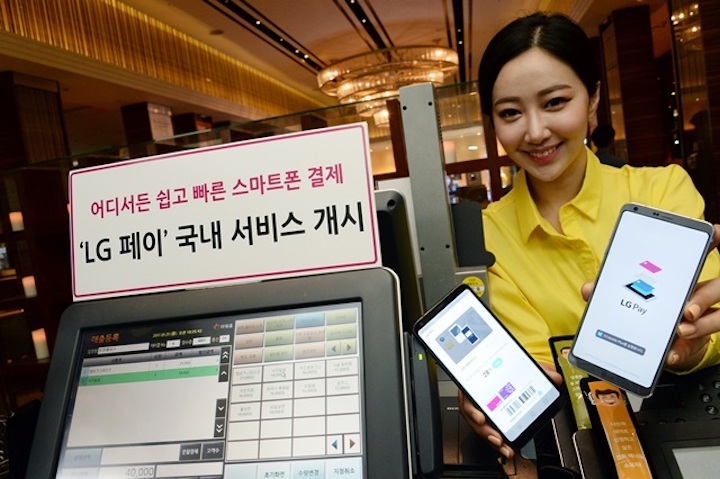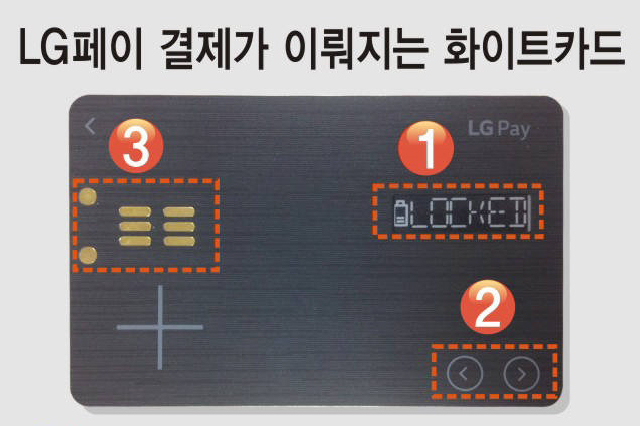
LG Pay Launch dates
LG Pay launched in South Korea at the beginning of June 2017, and was available in the LG G6 smartphone at the time, after a software update added functionality. What about an international launch? After all, Samsung and Apple’s mobile pay systems work in many countries around the world. LG’s mobile communications director Cho Jun-ho was quoted in early July as saying that it intends to improve the service’s convenience, and, “expand the scope of countries, payment methods, as well as devices” that support LG Pay.
No specific regions are mentioned,and international launch date may not be known by LG yet anyway, as it must strike deals with banks and credit card firms first, which are often lengthy processes.
It has taken a while for LG Pay to become a reality. Rumors began in the lead-up to MWC 2016, and continued throughout the year, before the service’s eventual announcement in 2017.
What devices and cards work with LG Pay?
LG Pay works with the LG G6 and the LG G6 Plus, but other devices will follow in the future. LG’s Cho Jun-ho said in July that low-cost LG phones would be equipped with LG Pay in 2018, along with other high-end LG phones. The LG V30, rumored for announcement before the end of 2017, may also support the service. Additionally, LG Pay may expand to work online, too.
Because LG Pay only operates in South Korea at the moment, it doesn’t support credit cards or banks outside the country. At the time of writing it works with Shinhan, KB Kookmin, BC, and Lotte cards only, but there are plans for all South Korean credit cards to work with LG Pay before the end of 2017. It can register up to 10 cards, and also manages membership cards.
According to Korea’s Yonhap News, LG says it will launch LG Pay in the U.S during the first half of 2018. The payment service will be available on the LG G7 and V40 premium phones before expanding availability to its midrange smartphones next year.
Rather than going by LG Pay, it might launch under LG Wallet instead. Earlier in the month, Android Police spotted that LG uploaded an app with the same name to the Google Play Store. But the app wasn’t fully functional and it was later pulled from the Play Store.
How does it work?
Unlike Samsung Pay, LG Pay uses a Wireless Magnetic Communication (WMC) system to authenticate payments, which are confirmed on the device with the fingerprint scanner. The system, created by a company named Dynamics Inc., allows an LG phone to read and save any standard card with a magnetic stripe, and then send that information to the majority of payment terminals used by shops around the world.
Samsung uses a technology called Magnetic Secure Transmission (MST) for Samsung Pay, while Apple uses NFC technology for Apple Pay.
LG Pay will also become a smart credit card?
LG Pay is a mobile payment solution at the moment, and although there’s nothing official yet, rumors have spread a physical LG Pay card may arrive in the future. Back in November 2015, ET News reported that LG’s plan for LG Pay would be a White Card similar to Plastc or the Coin card. In other words, it would be a plastic card similar to a credit card, but it would store several credit cards and possibly connect to an app on your phone.
In late January 2016, the same site leaked images of the said card along with unconfirmed claims. ET News is reporting that the card is about the same size as a credit card, but it’s slightly thicker. Users will be able to store information for several credit cards and cycle through them using the LCD display and navigation controls. The card can also be locked so no one else can access the stored information.
Supposedly users would supposedly be able to use the White Card in ATM machines as well. The White Card may also include metal pins for charging, and a charging accessory is rumored to ship with it. The images show what appears to be a battery life indicator on the LCD display of the White Card. According to a representative of one of LG Pay’s partners, transactions won’t go through LG’s servers, so they are still controlled by the credit card companies. This means that banks are more likely to partner with LG Pay.
Allegedly, the White Card will come with a magnetic stripe at the back when launched, so it won’t work with chip readers. However, sources indicate that chip support will arrive at a later date. Whether the physical card was a test platform for LG Pay, an abandoned initial plan, or a product that will come in the future, isn’t clear.
Editors' Recommendations
- Why you need to be excited about the Google Pixel 8a
- 5G home internet: What is it, and should you get it?
- Everything you need to know about the massive Apple App Store outage
- These are the best Android 15 features you need to know about
- When is my phone getting Android 14? Here’s everything we know






